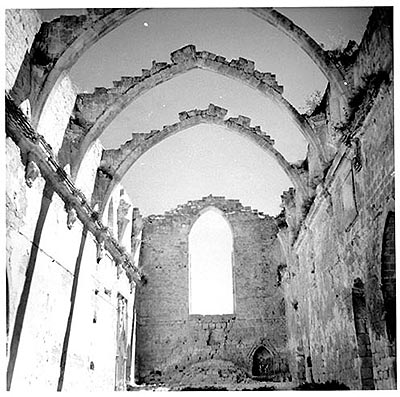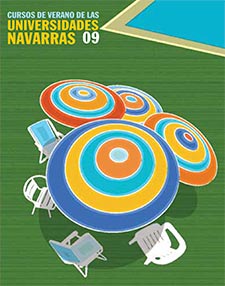BRINGING THE HERITAGE CLOSER. ESTELLA, ART AND THE ROAD
August 26, 2009
In the footsteps of the Gothic in Estella: Santo Sepulcro and Santo Domingo
Ms. Santiaga Hidalgo Sánchez. Chair of Navarrese Heritage and Art.
For the XIII, XIV and XV centuries, grosso modo the centuries of the Gothic, much had changed the small burg founded in 1076 next to the oldest population of Lizarra. By 1266 Estella counted 1125 fires, being, after Tudela and Pamplona, the third city of the kingdom. The peculiar layout of the city influenced the high issue of churches that existed in it. Its privileged status as a stage on the road to Santiago increased the needs of the resident population by joining those of the pilgrims. In spite of it, the issue of religious buildings was greater than the one that could maintain the population of Estella. For this reason, in many of these churches work was begun but never finished.
This is the case of the parish of the Holy Sepulchre, where the lack of economic resources of the parish meant that the construction process was delayed for centuries, and allowed a large part of the previous Structures to be preserved. For this reason, the Church of the Holy Sepulchre is an exceptional model of the construction methods of the Middle Ages average. On the other hand, its façade is one of the best examples of monumental Gothic sculpture in Navarre, and because of its connections with the sculpture of the cloister of Pamplona Cathedral, both formally and iconographically, it can be dated from 1335-1340.

Tympanum of the Church of the Holy Sepulchre of Estella, from 1335-1340.
A different case is that of the convent of Santo Domingo, which from its foundation (1258) received the sponsorship of the Navarrese monarchy in the person of Theobald II. This relationship between the Dominicans and the monarchy was common in the Middle Ages average, since on many occasions the monarchs used the monastery as a royal residency program during their travels. This was the case of Charles III with the convent of Estella, where he promoted works of great importance of which we only have documentary information.

Interior of the convent of Santo Domingo de Estella, built at the end of the 12th century.
(Photo before the restoration. file Uranga. Institución Prríncipe de Viana)
PROGRAM
TUESDAY, AUGUST 25
The splendor of Estella in the Renaissance. Art and Artists
Ms. María Concepción García Gainza. Chair of Navarrese Heritage and Art.
Image of God, image of man: the façade of San Miguel de Estella
Mr. Javier Martínez de Aguirre Aldaz. Complutense University of Madrid
San Pedro de la Rúa: styles and interstyles in a medieval building.
D. Carlos J. Martínez Álava. I.E.S. "Pedro de Ursua" of Pamplona
WEDNESDAY, AUGUST 26TH
Following in the footsteps of the Gothic in Estella: Santo Sepulcro and Santo Domingo
Ms. Santiaga Hidalgo Sánchez. Chair of Navarrese Heritage and Art.
Estella's movable heritage
Ms. Mercedes Jover Hernando. Chair of Navarrese Heritage and Art.
A city born for the Camino. visit guided tour of the city of Estella
D. Román Felones Morrás. Full Professor of Geography and History of the I.E.S. Tierra Estella.
THURSDAY, AUGUST 27TH
Architecture and Humanism in Estella in the 16th century.
Mrs. María Josefa Tarifa Castilla. Chair of Navarrese Heritage and Art.
Traces of the Baroque in Estella
Ms. Pilar Andueza Unanua. Chair of Navarrese Art and Heritage.
The sumptuary arts in Estella: from the Age average to the 19th century.
D. Ignacio Miguéliz Valcarlos. Chair of Navarrese Heritage and Art.
FRIDAY, AUGUST 28TH
Images of a conflict. Estella and the last Carlist War
D. Ignacio Jesús Urricelqui Pacho. Chair of Navarrese Heritage and Art.
reportIdentity and image of Estella in the plastic arts of the 19th and 20th centuries.
Mr. José Javier Azanza López. Chair of Navarrese Heritage and Art.
Museum and city. Gustavo de Maeztu and Estella
D. Gregorio Díaz Ereño. Director of the Jorge Oteiza Museum.
Closing

